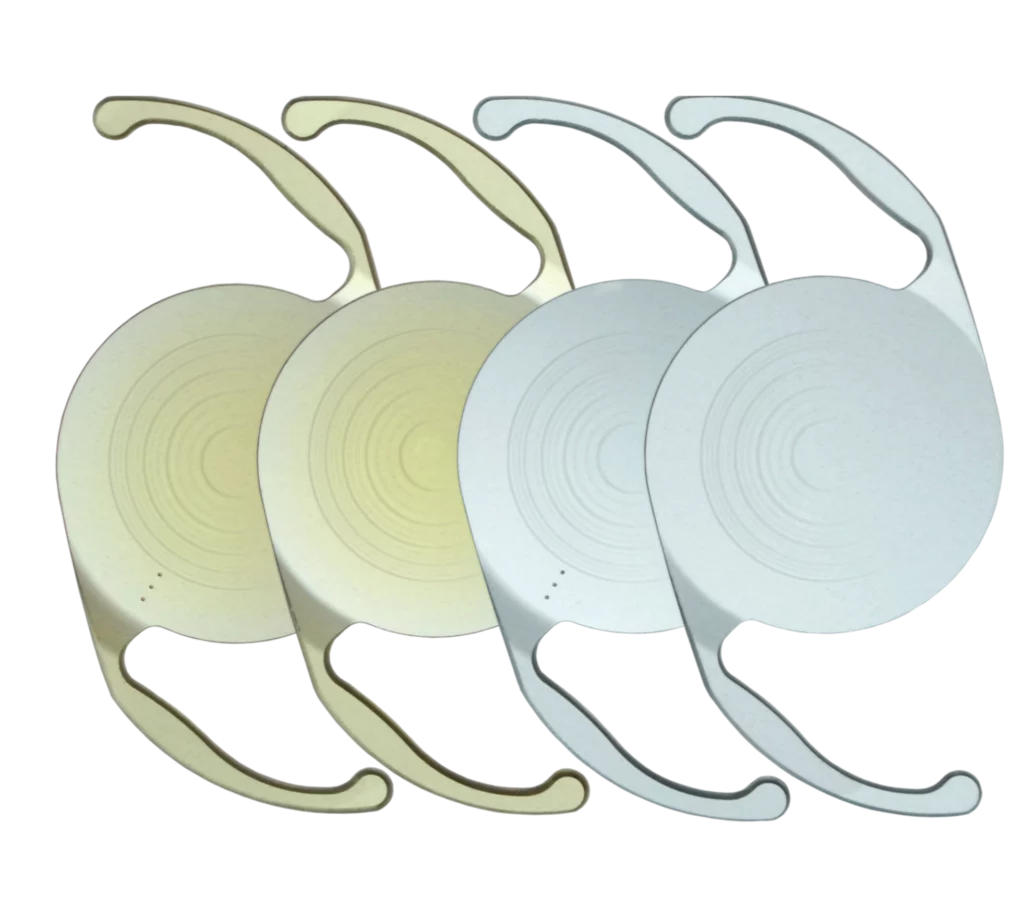Phakic implants, such as ICL and IPCL, are intraocular lenses specifically designed to correct high myopia, particularly beyond –10 diopters.
Unlike laser procedures, this technique preserves the natural crystalline lens: the implant is inserted into the eye without removing any tissue.
ICL (Implantable Collamer Lens)
- A very common implant, positioned behind the iris
- Excellent vision quality, reversibility of the procedure
- No impact on the cornea
- However, it requires intraocular surgery and regular follow-up.
IPCL (Implantable Posterior Chamber Lens)
- A more recent implant, using various materials (acrylic, silicone)
- Very good long-term stability
- Lower risk of induced astigmatism
- Same type of surgery and precautions as the ICL
Both techniques offer a reliable and precise solution for patients whose myopia exceeds the limits of laser treatment.
Multifocal implants: complete correction of presbyopia
Multifocal implants are today considered the method offering the best results for correcting presbyopia.
They require replacing the crystalline lens, as in cataract surgery, with a major advantage:
➡️ a single procedure for life, with no future risk of cataract, since the aging lens is replaced.
Each implant is custom-calculated preoperatively, based on the eye’s optical and anatomical characteristics.
Premium multifocal implants allow simultaneous correction of:
- myopia
- hyperopia
- astigmatism
- presbyopia
They provide distance and near vision without glasses, turning lens surgery into a true refractive surgery.
Patient safety and information
Like any intraocular procedure, these techniques present risks comparable to those of cataract surgery. Rare side effects (nighttime halos, decreased contrast) may occur, but are not systematic.
A comprehensive eligibility assessment allows evaluating the best option for each patient, and a detailed information sheet is provided before any decision is made.

